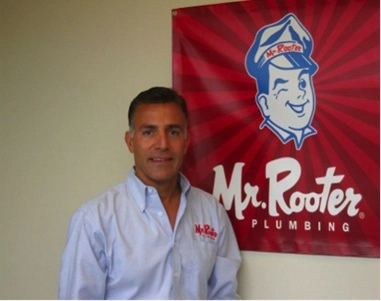Lives are busy and nothing is worse for a family than when they experience a bathroom plumbing problem. Any bathroom plumbing fixture that develops a leak, a slow-moving drain, or a clog, can seriously throw a wrench into the works; literally.
We begin this series on common plumbing problems with a look at bathroom plumbing fixtures: the toilet, the sink, and the bathtub and/or shower. Knowing more about problems in your bathroom can help you diagnose what is happening when you have a pipe leak or a clogged drain.
Are You Experiencing Leaks or Clogs in Your Bathroom Plumbing?
Did you know that sluggish drains in your bathroom will become full-blown clogs if they are ignored? It’s true! With only a single trap and drain, a bathroom sink is far easier to diagnose plumbing concerns than a kitchen sink. Bathroom drainpipes are also narrower – 1 ¼ inches in diameter – because they do not carry grease or food waste. Bathroom sinks are always fitted with a trap, (curved piece of pipe connected to the drain), P-shaped if it joins a branch drain in the wall or S-shaped if it drains through the floor.
Depending on where the floor is wet could help determine where the leak is originating. Water around the base of the toilet is most likely coming from the wax ring, (a gasket between the toilet and the floor flange that enters the drainpipe). Over time wax rings fail when they become dry and brittle. If the floor is wet behind the toilet perhaps the tank bolts or the rubber seal between the tank and the bowl has worn out.
Did You Know Bathroom Sink Problems Will Seriously Damage Your Home?
The two most common bathroom sink problems are leaks and clogs. Most of the time bathroom sink leaks can be attributed to worn faucet parts or loose supply or drain fittings. The most common bathroom sink clogs are caused by soap, cosmetics, and hair.
If you find that your drain is moving slowly, the inevitable drain clog is just around the corner. Preventive plumbing maintenance is your best defense. Ask your local plumbing specialist about their drain maintenance program and keep your bathroom sink working efficiently.
Are Bathtub Faucet and Shower Head Leaks Costly?
A bathtub faucet leak can be relentless and dealing with the constant dripping can drive a person mad. We can fix it, but in the meantime, consider the following bathtub plumbing tips to keep your bathroom plumbing system operating smoothly. Water leaks around the diverter handle (push-pull diverters, lever-action – switches the flow of water from the tub spout to the shower head), call for replacing the O-ring or a complete diverter replacement. If water continues to flow from the bathtub spout after engaging the diverter for the shower head to spray, then the problem is a worn diverter, and the bathtub spout should be replaced.
Inside the bathtub/shower faucet assembly are gaskets, springs and O-rings, depending on the type of faucet assembly that is installed. All can leak because of failing parts. Caulking will seal a leaky joint between the bathtub/shower and the wall/floor. Bathtub faucet leaks, depending on your make or model, can be a simple repair with some common parts: packing nuts can be tightened; O-rings and stem washers can be replaced.
The shower head may begin leaking around the spray head or around the threaded connection that supports the appliance. Sometimes, just tightening the unions or replacing a washer can resolve that constant drip. Maybe you have noticed that water is coming out from around the shower head connection, which will reduce the flow of water coming through the shower spray head. It could just need tightened, or the washer has become worn and needs replaced.
How to Keep Your Bathtub and/or Shower Drain Moving
Soap clogs and hair matted around the drain screen and mechanism are the most common reasons a bathtub or shower will not drain. So, it’s best to never ignore the first signs of sluggish drains. Remove the drain screen regularly and use a stiff wire to remove the gunk from the drain. If that doesn’t resolve the slow-moving drain, then there may be a clog farther down the main drain and this will require the assistance of a professional to resolve the problem.
It is not recommended by reputable plumbers to use harsh chemicals down your drains. Also, it can be very dangerous to plunge a drain that has been treated with caustic lye or drain cleaners containing hydrochloric acid – the vacuum created by the plunger over the drain can cause the solution to splash back up and cause serious burns to the skin and there is a potential risk of getting it into the eyes.
If you are experiencing a bathroom plumbing problem a professional plumber can come to your house and diagnose your issue. We never charge an overtime fee and are available 24/7,
including weekends and holidays.
To read more blogs, click here.
 About the Author: Vincent Sposari, Mr. Rooter Plumbing of Tacoma
About the Author: Vincent Sposari, Mr. Rooter Plumbing of Tacoma
Vinnie has been a trusted plumber since 1989 and a Mr. Rooter owner since 1992. With over 31 years to back him, Vinnie has experience with a wide range of plumbing related solutions and systems. He and his team specialize in plumbing repairs, drain cleaning, emergency plumbing, and more.

